Horseshoe studs are designed to give horses added traction on their shoes.
Not everyone uses them, but some equestrians swear by them.
They are not designed for all horses, however, and it is important to know all about horseshoe studs before you consider them for your own horse.
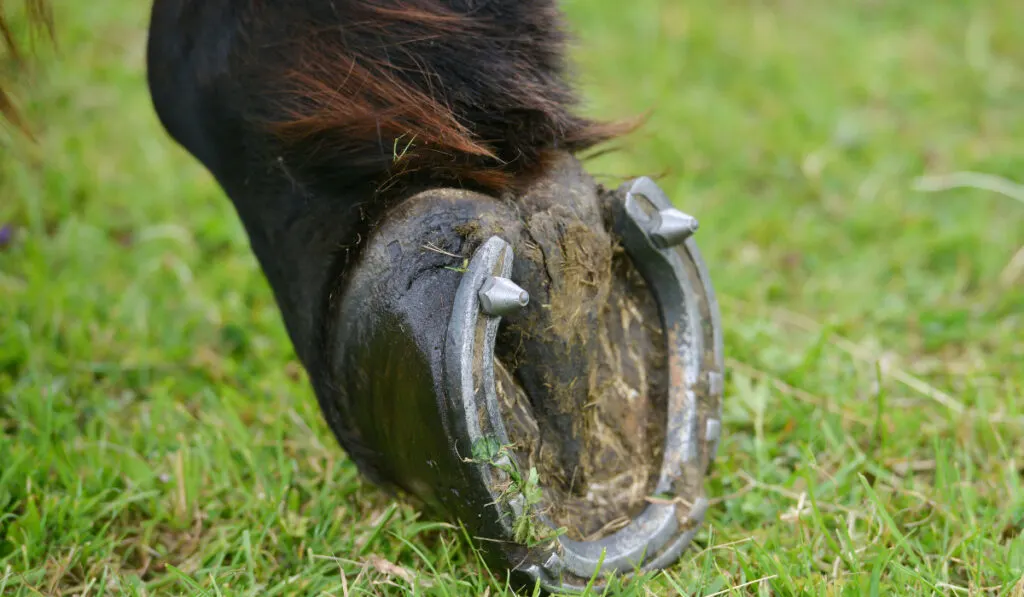
Horseshoe studs are small metal additions that are screwed into preprepared holes on the bottom of a horse’s shoe.
They jut out of the shoe and help the horse gain better traction when walking over mud, gravel, or other rough or weather-covered terrain.
There are some vital precautions that should always be taken when using horseshoe studs and they are not ideal for all horses or riders.
Table of Contents
Why and When Would You Use Horse Shoe Studs?
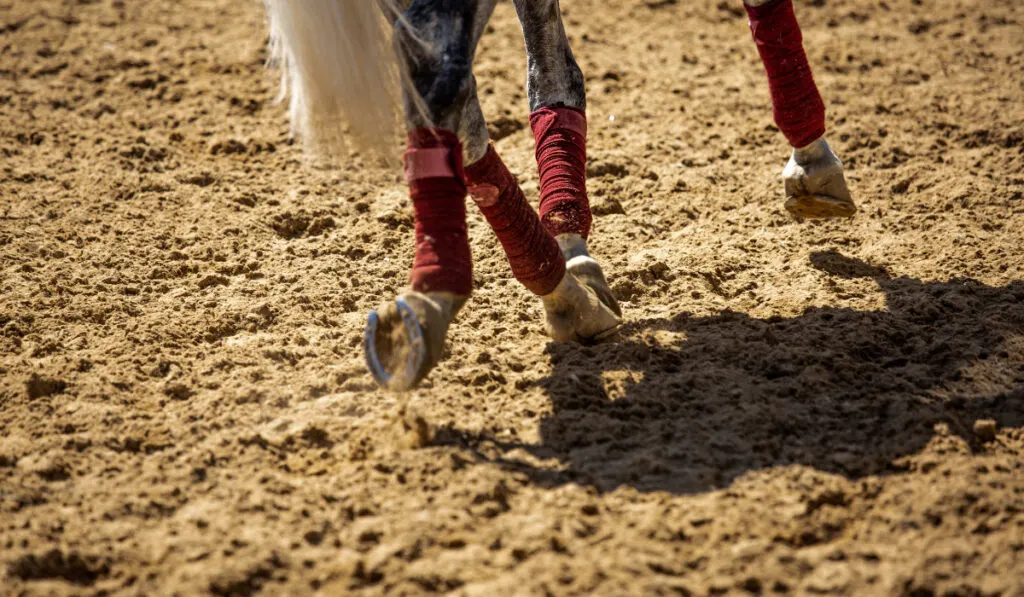
Horseshoe studs are made to be used when the terrain is slick and slipping is a real possibility.
They are used most often in competition situations, when horses are jumping, running, or turning sharply.
The studs will help horses keep their footing and avoid falling.
Horseshoe studs basically help horses the same way that cleats help an athlete gain traction on the field.
Do Horseshoe Studs Stay in All the Time?
Horseshoe studs are not meant to stay on horses outside of a competition or riding activity.
Horseshoe studs should only be put in immediately prior to the event and taken out once it is over.
They must be removed before horses are stalled, trailered, or turned out in a pasture.
Horseshoe studs can be extremely dangerous for horses and their riders if they are not removed once the ride is completed. (source)
Who Puts Horseshoe Studs on the Horse?
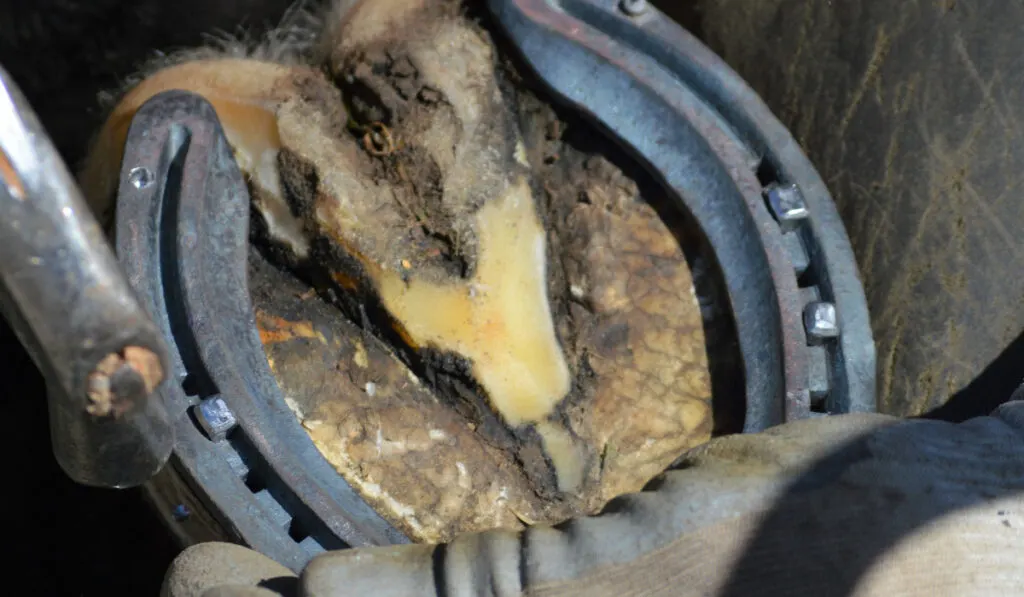
The holes for horseshoe studs should be drilled into horseshoes by a professional horseshoe farrier.
They know exactly how to place them to keep the horse safe and balanced.
Once the holes are in place, the rider can screw in the horseshoe studs as they are needed. (source)
Do Horseshoe Studs Hurt the Horse?
Horseshoe studs do not hurt horses if they are used correctly.
Before using horseshoe studs, you should talk to your veterinarian to make sure your horse is healthy enough to wear them.
Horses with leg, balance, or lameness issues should not wear horseshoe studs.
Avoid using horseshoe studs on horses that are prone to kicking, as it can be dangerous to both the horse, riders, and other horses.
Horseshoe studs should always be used in pairs.
Each shoe should have two studs, one on each side of the shoe to keep the hoof balanced on the ground.
Horses should be fitted with leg boots to keep their legs safe while wearing horseshoe studs. (source)
If your horse shows any adverse side effects from wearing the studs, either physically or personality-wise, horseshoe studs may not be ideal for your horse.
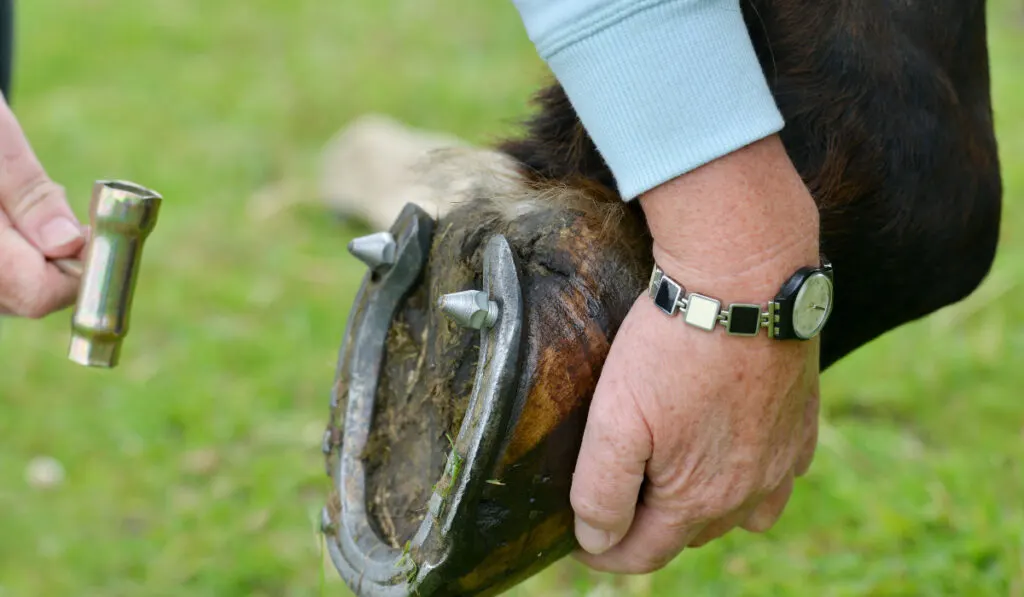
Are Horseshoe Studs Used on the Hind Feet or Front Feet?
Horseshoe studs should be used on either just both hind shoes or on all four of their shoes.
This helps horses keep a more healthy balance overall.
The studs should either be all the same size, or if one set is larger, it should be the hind ones only. The sizes of the studs should match for each pair of hooves. (source)
What Holes in the Shoe Do the Studs Go In?
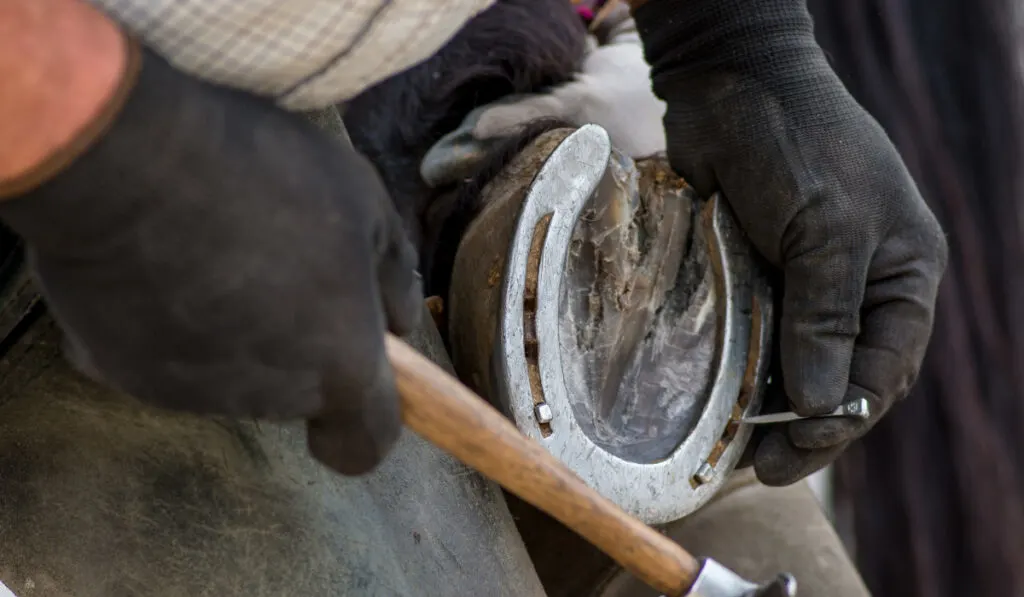
Horseshoe studs should only go into the predrilled holes that are created by a farrier.
When you are not using horseshoe studs, you can use a rubber or disposable plug or blank stud to keep the holes filled and free of rocks or other debris. (source)
Do You Need a Special Shoe to Fit a Horseshoe Stud?
You do not need a special shoe for horseshoe studs, but it does have to be one that a farrier will be able to drill holes into.
These are usually metal shoes but occasionally aluminum will work.
In the United States, farriers will usually drill holes that are 3/8” round. They may also encourage adding clips to the horseshoes to help keep the horseshoe in place when the studs are in use. (source)
Types of Horseshoe Studs and Their Uses
There are 3 basic types of horseshoe studs that equestrians and farriers can choose from.
It is important to consult a veterinarian before you decide on a specific horseshoe stud type for your specific horse.
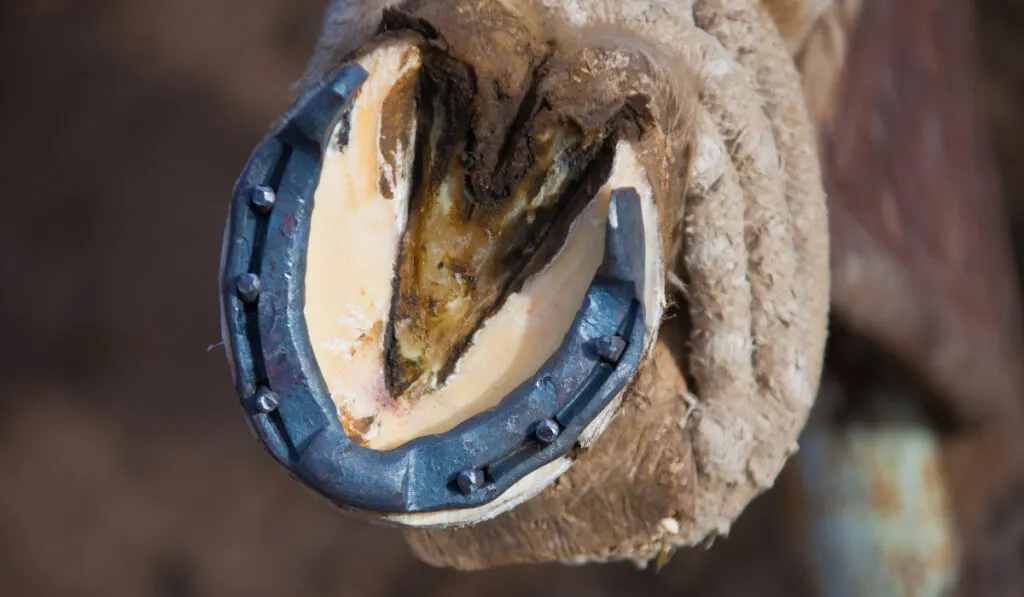
Each type of horseshoe stud can come in various shapes and designs, but at their core, they will fit into one of the below categories.
1. Road Studs
Road studs, also called flat studs by some, have flat ends and are relatively short since they are intended for paved roads and hard, flat trails that your horse is walking on.
Road studs help horses have just a small amount of added grip they need on these kind of flat surfaces.
Riders would use this type of stud for trail riding, parades, or when they are going to be walking over hard, flat surfaces.
These are also the best horseshoe studs to start with, since they are flat and they introduce your horse slowly to horseshoe studs in general. (source)
2. Grass Studs
Grass studs are slightly bigger than road studs, but smaller than mud studs which we will discuss shortly.
Grass studs have pointy ends and narrow designs that allow them to break through grassy ground and given horses extra traction.
These are also ideal for arenas that are filled with sand.
Although they are made for grassy areas, grass studs are not intended for use while a horse rests or plays in a pasture. (source)
3. Mud Studs
Also known as deep footing studs, mud studs are noticeably larger than flat studs and are intended for use on muddy, wet areas that are easy to slip on.
These studs dig into the wet surface and allow horses to gain traction they would not have otherwise.
These are ideal for when you know your horse will be walking over snow or muddy, wet terrain where slipping is a real threat. (source)
Final Thoughts
Horseshoe studs are not for every horse or rider, but they can be a great safety feature for many equestrians across the country.
If used correctly and with the right safety measures in place, horseshoes studs can help horses compete more safely and effectively in a variety of horse riding events, or simply on a muddy trail or a paved road.

